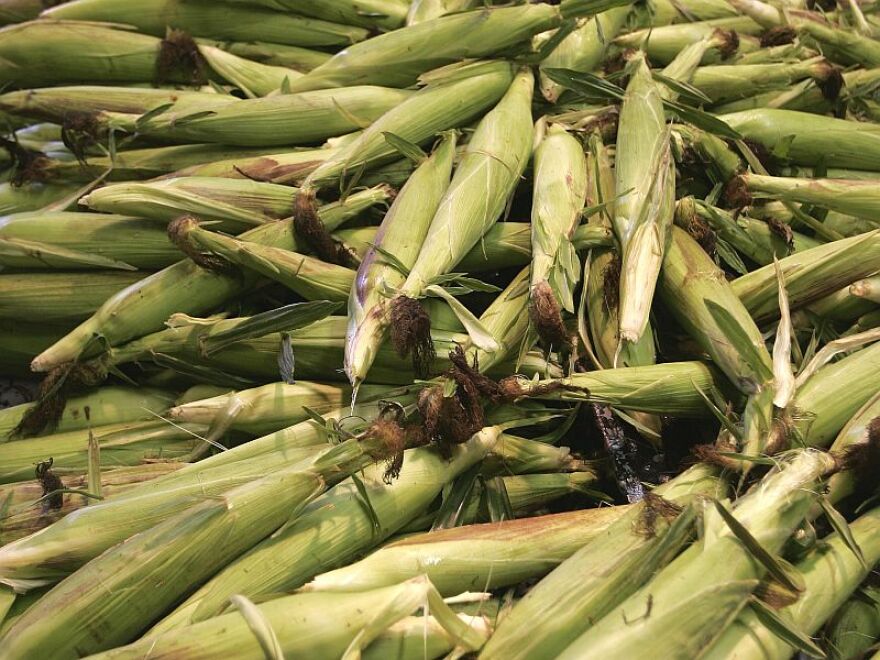It was supposed to be knee high by the 4th of July, but more likely it was knee high in water. But with the recent spate of hot, humid weather sweet corn is taking off. If you're growing your own patch here are a few pests to watch for.
The corn earworm adult moth lays eggs on the silks of corn ears. The eggs hatch and the caterpillar tunnels into the ear tip to eat the silks and kernels. It's more prevalent on early season than late season corn varieties. You can ignore this pest and simply cut off the tip when you harvest or you can add a few dropperfuls of vegetable oil to the silks when they turn brown to smoother the eggs.
Corn stalk borers are a bit more troublesome. The young larvae feed on corn leaves, tassels and silks causing stalks to break and ears to be damaged. Spray Bacillus thuriengesis kurstaki (AKA dipel or thuricide) or pyrethrum on corn leaves and ears when when start seeing the damage.
Raccoons are probably the biggest reason I don't grow sweet corn. They have an uncanny ability to know exactly when you'll be harvesting your corn and come the night before to decimate the crop. While many try scent deterrents such as animal urine and human hair. Some gardeners wrap duct tape around individual ears to protect them. However, the best protection is a good electric fence. Place the wire 6 inches and a second wire 12 inches above the ground. Install the fence before your corn is mature.
Now for this week's tip, Japanese beetles are out in force this year. Handpick them in the morning and drop them in soapy water, place traps at least 30 feet away from your plants near a tree to lure them away, spray Neem oil or pyrethrum in evenings to protect the bees, and spray beneficial nematodes on the ground in late August or early September to reduce next year's beetle crop.
Next week on The Vermont Garden Journal I'll be talking about some shady ground covers. Until then, I'll be seeing you in the garden.
Resources:
European Corn Borer
Corn Earworm
Controlling Raccoons





